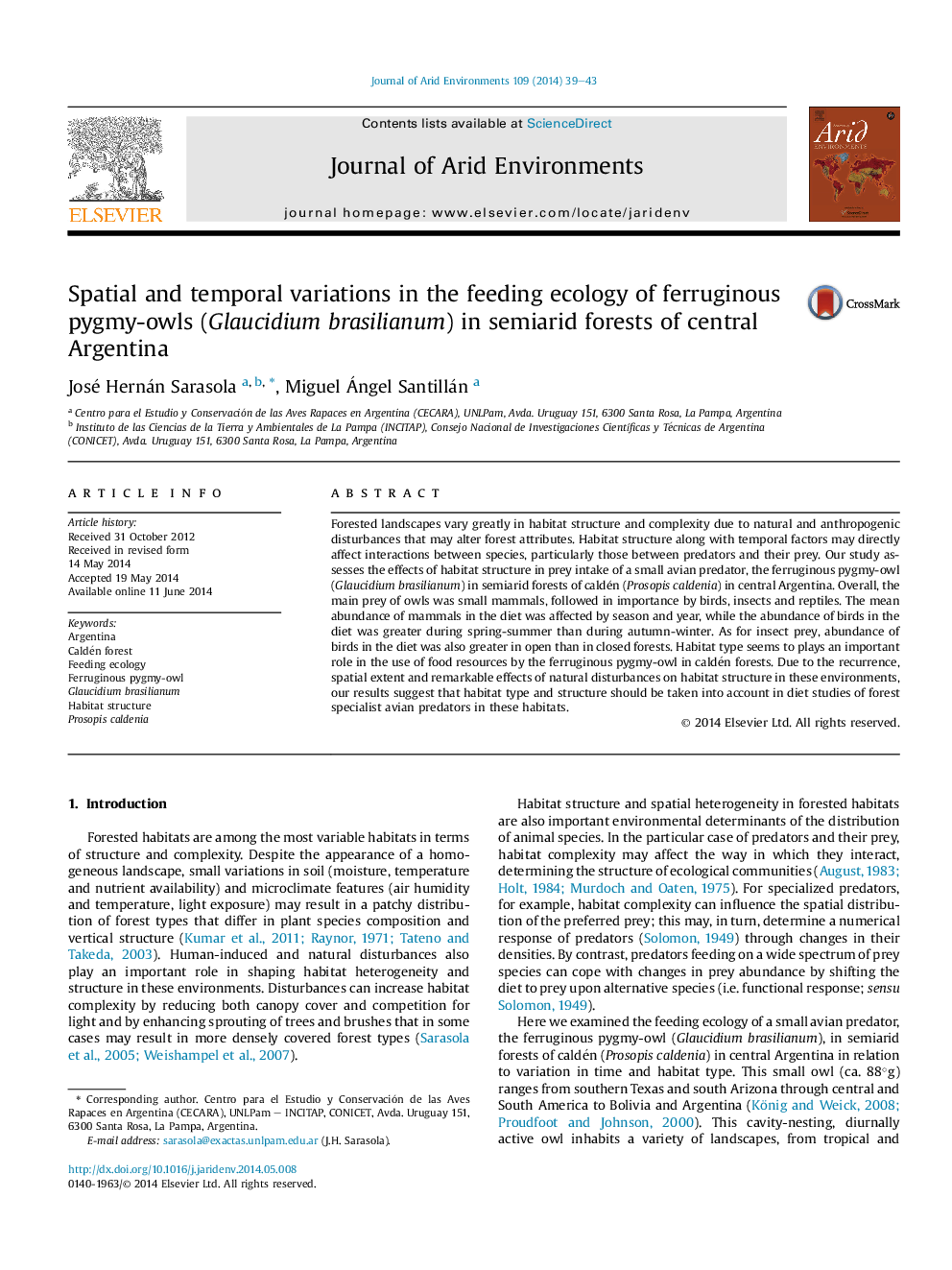| Article ID | Journal | Published Year | Pages | File Type |
|---|---|---|---|---|
| 4392975 | Journal of Arid Environments | 2014 | 5 Pages |
Abstract
Forested landscapes vary greatly in habitat structure and complexity due to natural and anthropogenic disturbances that may alter forest attributes. Habitat structure along with temporal factors may directly affect interactions between species, particularly those between predators and their prey. Our study assesses the effects of habitat structure in prey intake of a small avian predator, the ferruginous pygmy-owl (Glaucidium brasilianum) in semiarid forests of caldén (Prosopis caldenia) in central Argentina. Overall, the main prey of owls was small mammals, followed in importance by birds, insects and reptiles. The mean abundance of mammals in the diet was affected by season and year, while the abundance of birds in the diet was greater during spring-summer than during autumn-winter. As for insect prey, abundance of birds in the diet was also greater in open than in closed forests. Habitat type seems to plays an important role in the use of food resources by the ferruginous pygmy-owl in caldén forests. Due to the recurrence, spatial extent and remarkable effects of natural disturbances on habitat structure in these environments, our results suggest that habitat type and structure should be taken into account in diet studies of forest specialist avian predators in these habitats.
Related Topics
Physical Sciences and Engineering
Earth and Planetary Sciences
Earth-Surface Processes
Authors
José Hernán Sarasola, Miguel Ángel Santillán,
